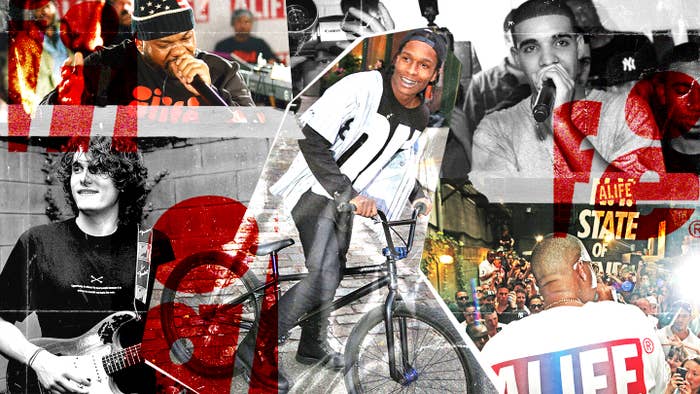
In the summer of 2006, John Mayer was scheduled to perform inside a small concrete backyard tucked behind Alife’s Rivington Street store in New York. This was not a music venue. Alife’s backyard was no longer than a subway car, tightly enclosed beneath Lower East Side walk-up apartment buildings, and typically used as a place for smoke breaks rather than a stage for an artist who toured the world. At the time, Mayer had two studio albums out, one that debuted at No. 1 on the Billboard 200, and three Grammy awards. So to perform for free at a small sneaker store in Downtown Manhattan seemed like an odd decision. But for Mayer, it was right up his alley.
“I remember sitting in Alife’s office and talking about how the concert would be, how to pull it off, and who we should invite. They were really dedicated, uncompromising, and focused,” says John Mayer on the phone. Mayer lived in SoHo at the time and found escapism by shopping at stores like Alife during a burgeoning era for streetwear in New York. As Mayer’s mainstream fame grew substantially, he says he reached for anything that reminded him of what it felt like to be underground. He found that through eclectic hobbies like shopping for Japanese streetwear at Union or spray painting guitar amp cabinets in Brooklyn with graffiti artists like John “Crash” Matos, who introduced Mayer to Alife’s owner, Rob Cristofaro.
“The things that I do, which I'm very happy for, reaches a lot more people than the things that I'm into,” says Mayer. “Those Alife guys were the first people to really look at me and go, ‘Let's do it,’ and forget about whatever the word on the street was about me. They were the first people to forgo that and say, ‘Let's do it,’ because it seems right.”
The idea behind the concert was simple. Mayer was going to perform for a small crowd over a DJ who played hip-hop beats. But, just days before his scheduled performance, the show was thrown into jeopardy.
“John Mayer’s DJ pulled out and he asked if we had one,” says Alife’s general manager Treis Hill. But something serendipitous happened.
A day before the session was set to go, Hill received a call from Just Blaze asking for Hill to deliver him, JAY-Z, and Questlove pairs of Reebok “Ball Outs.” Although only 84 pairs were made, Hill still happened to have a few left. He quickly hand delivered the tennis-felt-covered sneakers to Sony Studios in Midtown Manhattan, where JAY, Questlove, and Blaze were recording new music. Blaze stepped out of the room, paid Hill, and gave him his cell number in case he ever needed more kicks. Hill called him the next day.
“Yo, this is kind of random—and I just met you to sell you some sneakers—but would you be interested in DJing for free at the store for John Mayer?” Hill asked Just Blaze. “At that time, John Mayer was at the height of everything and Blaze was totally down. John Mayer wasn't thinking we would get a DJ as big as Just Blaze. He was just asking us to get him anyone that could drop beats.”
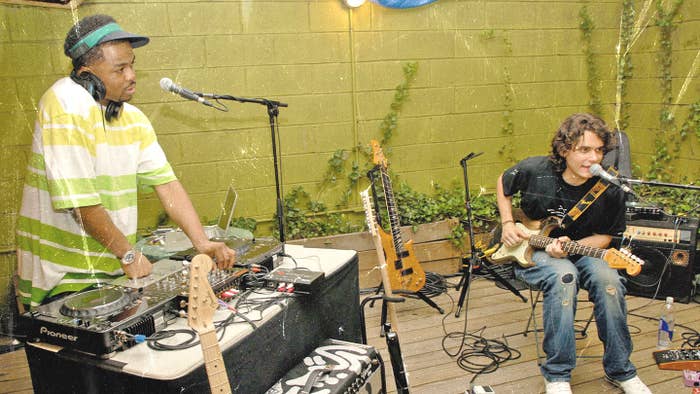
On the night of the performance, the store’s backyard was transformed into a bonafide music venue with Alife’s unique touches. The Graffiti artist KR painted the back of the store with a modified fire extinguisher and worked with Crash to customize Fender guitars and amps. Two guitar pedals that Mayer covered with Alife stickers were turned into exclusive T-shirts only given out to those who attended. Underneath a white tent, on a wooden patio deck, Blaze stood ready at the turntables with a blinged-out Darth Vader chain and an all-green LRG tee to match his freshly unboxed pair of Reebok “Ball Outs.” “I just really remember that night as something that made a lot of people scratch their heads going into it,” recounts Mayer, who arrived to the show dressed from head to toe in Japanese brands like Neighborhood and WTAPS. Mayer took his seat on top of a green metal gardening chair and plugged in an eight-string guitar. The two artists, who had never met each other before that night, dove right into it.
“My job as a producer is to make the artist look as good as I can,” says Just Blaze, who only prepared for the show by picking guitar-friendly beats. “Like any other jam session, you spend your first couple of minutes finding a groove. I'm throwing random beats out just to get a feel of where Mayer was comfortable. He's throwing some guitar licks out to kind of give me his direction of where he wants to go.”
At first, what was supposed to sound like a collaboration sounded more like two auteurs competing against one another. Mayer skidded his way through hip-hop staples like “Sucker MC’s” and calmly cruised through classic rock records like “Missing You” by the Rolling Stones. “But when the duo closed out the show with “‘93 Til Infinity” and Blaze’s latest hit with Kanye West, “Touch the Sky,” they comfortably moved into each other’s lanes.
“Alife having an event with me and Just Blaze back then was the longest pass anyone ever threw in terms of a crossover,” Mayer says now. “I think there was something artistically antagonizing about it in a very cool way. Back then, if a pop artist had a hip-hop artist on a record, it would make MTV News. It was a big deal because you never really left your fencing. For them to take that idea, I still look back on it as one of my proudest moments outside of making records and touring.”
But for performers, an Alife Session was much bigger than a run-of-the-mill in store performance. Alife was where Drake wanted to officially release major albums like Thank Me Later and Nothing Was the Same. Years before Dev Hynes performed on the runway of Louis Vuitton, he performed his first Blood Orange show with a live band at Alife. It was one of the only venues where you could have seen Bobby Shmurda and Rowdy Rebel perform live before they were incarcerated. And Alife was where ASAP Rocky staged his first real concert in front of the very label heads who signed him to a $3 million record deal. Long before brands like Off-White began collaborating with rappers on tour merch, and before massive streetwear events like ComplexCon, Alife was one of the first stores to put a stake in the intersection of streetwear, music, and art.
“The Alife Sessions invented this great crossover event way before social media or for likes,” Mayer says. “You just did it because you knew it was going to shake something else loose in your creativity.”
For Alife’s original founder, Rob Cristofaro, combining art, streetwear, and retail was part of the store’s DNA since it opened in 1999. “When Alife started, it was a gallery, a creative space, and a store,” says Cristofaro. “That idea sparked a whole bunch of Alife-esque retail stores which later became apart of Alife's distribution. Alife was at the forefront of this model for retail that many others followed.”
“They were always talking to younger people and trying to promote them.”-Craig "kr" costello
As he sips on a drink inside the lobby of the Beekman Hotel in an old blue Woolrich Coach’s jacket that he customized with a piece of red Dymo label tape that reads “ROBLENCIAGA,” Cristofaro’s eyes widen and his voice booms when he speaks about the early days of Alife. Back then, Alife operated a larger storefront on Orchard Street and used its space to host in store exhibitions for young up and coming artists. Before artists like Steve “ESPO” Powers” released an iconic Nike Air Force II collaboration, and before Ryan McGinness exhibited his work in the Museum of Modern Art in New York, Alife showcased their pieces.
“They were always talking to younger people and trying to promote them,” says Craig “KR” Costello, a graffiti writer who was approached by Alife to turn his homemade graffiti ink, “Krink,” into a branded product that was first sold at Alife’s original Orchard Street shop. “Alife was just this meeting place where people would hang out from all different walks of life. At Orchard Street and at Rivington, Alife was this creative hub where you could meet people to build on projects and ideas.”
In 2001, Alife opened its current Rivington Street outpost. But when the store lost the lease for its original location on Orchard Street the following year, it was no longer able to distinguish itself through art exhibitions. The Rivington Club, which was split into two storefronts that were each about the size of a small bodega, was much smaller than Alife’s original two-floor store. However, Rivington was considered to be just as, or even more, unique than Orchard. It was the first sneaker store of its kind to present itself as upscale, where clientele had to be buzzed inside to see its cherrywood interior or quilted leather couch.
“Nowadays, everyone kind of knows about it, and that's great. But if you even knew there was a place called Alife, you were OK. Because to even know about it was your golden ticket,” says Mayer “I think if you were interested in it, that's what proved your loyalty. If you even found the door or knew the password.”
Despite having no signage in front of the store, plenty of celebrities found themselves ringing Alife’s doorbell. Hill and Cristofaro say they never had to pay performers for Alife Sessions because most of them were fans or friends of the brand. Cristofaro recalls Pharrell and the Neptunes as early customers at the Orchard Street store. Clipse shooting photos with New Era fitteds in the backyard of Rivington. Nas declared himself to be an “Alife tag popper” on his song “Make the World Go Round,” and filmed the music video at Alife’s old Los Angeles store on Fairfax. Drake shouted out Alife employees on songs like “5AM in Toronto” and regularly shopped at Alife’s New York and Los Angeles stores with his manager Oliver El-Khatib. Hill remembers the ASAP Mob frequently visiting the Rivington Club and the late ASAP Yams being a mainstay in the store’s backyard.
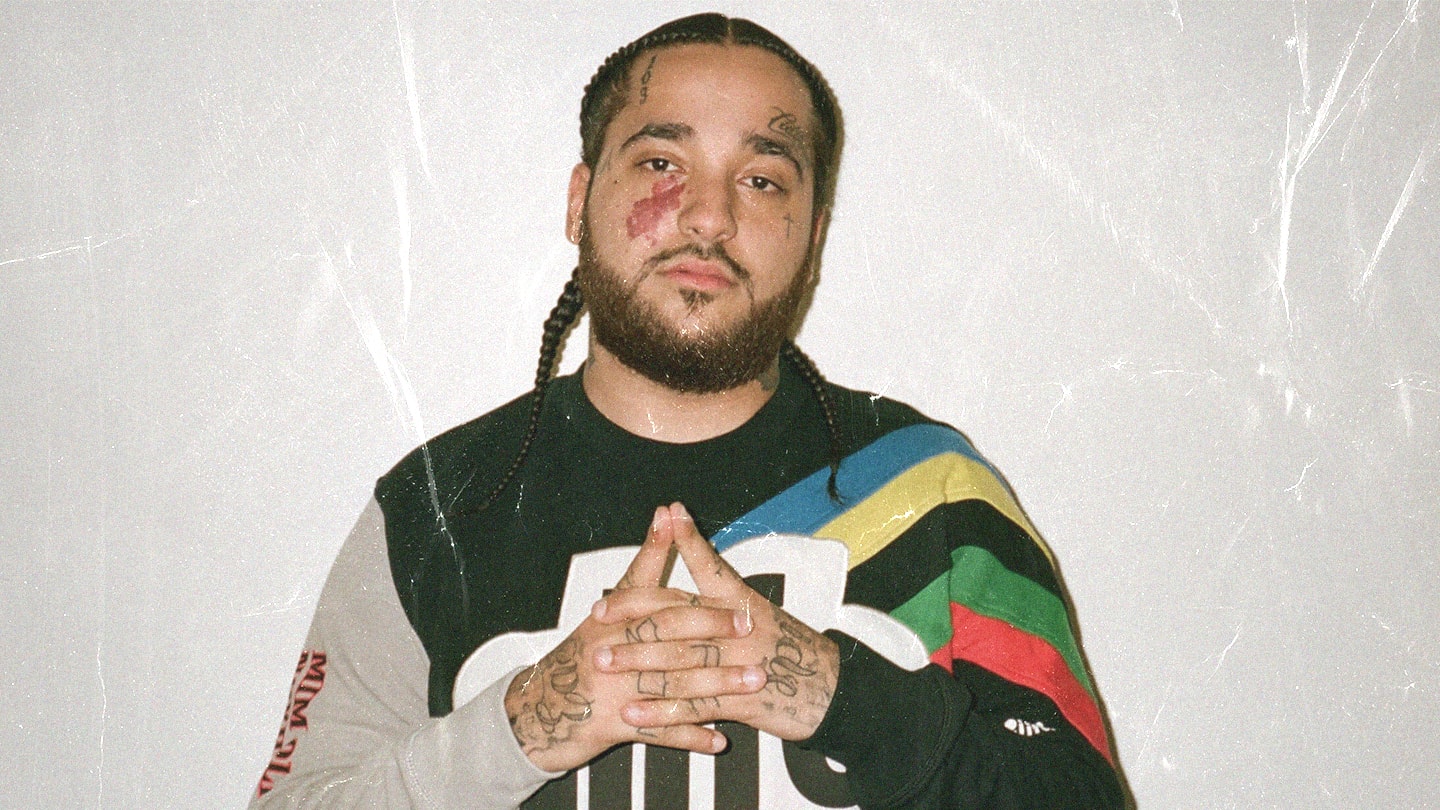
“Alife was always much bigger than T-shirts or product. It was more than just a store; it was a lifestyle,” says Tommy Campos, a former Alife employee who now works at Drake’s label October’s Very Own or OVO. “Rappers weren't the only ones who hung out there. You had the IRAK crew over there, designers, and other highly creative people.”
When Campos took a job at Alife nearly a decade ago, the brand was booming and opening stores around the world. There was an Alife up north in Vancouver, a store in Los Angeles, a flagship in Tokyo, and a spot inside the influential Parisian boutique Colette. “Once I started working there, Alife started going harder with the sessions,” says Campos, who remembers when the store was hosting back-to-back shows with rap legends like Three 6 Mafia and Nas.
“That was a memorable day. The city was on fire, and touching the people mattered so much then,” says Nas of his Alife Session in 2008 where he officially released his ninth studio album, Untitled. “It felt like I went back to how it started at that show.”
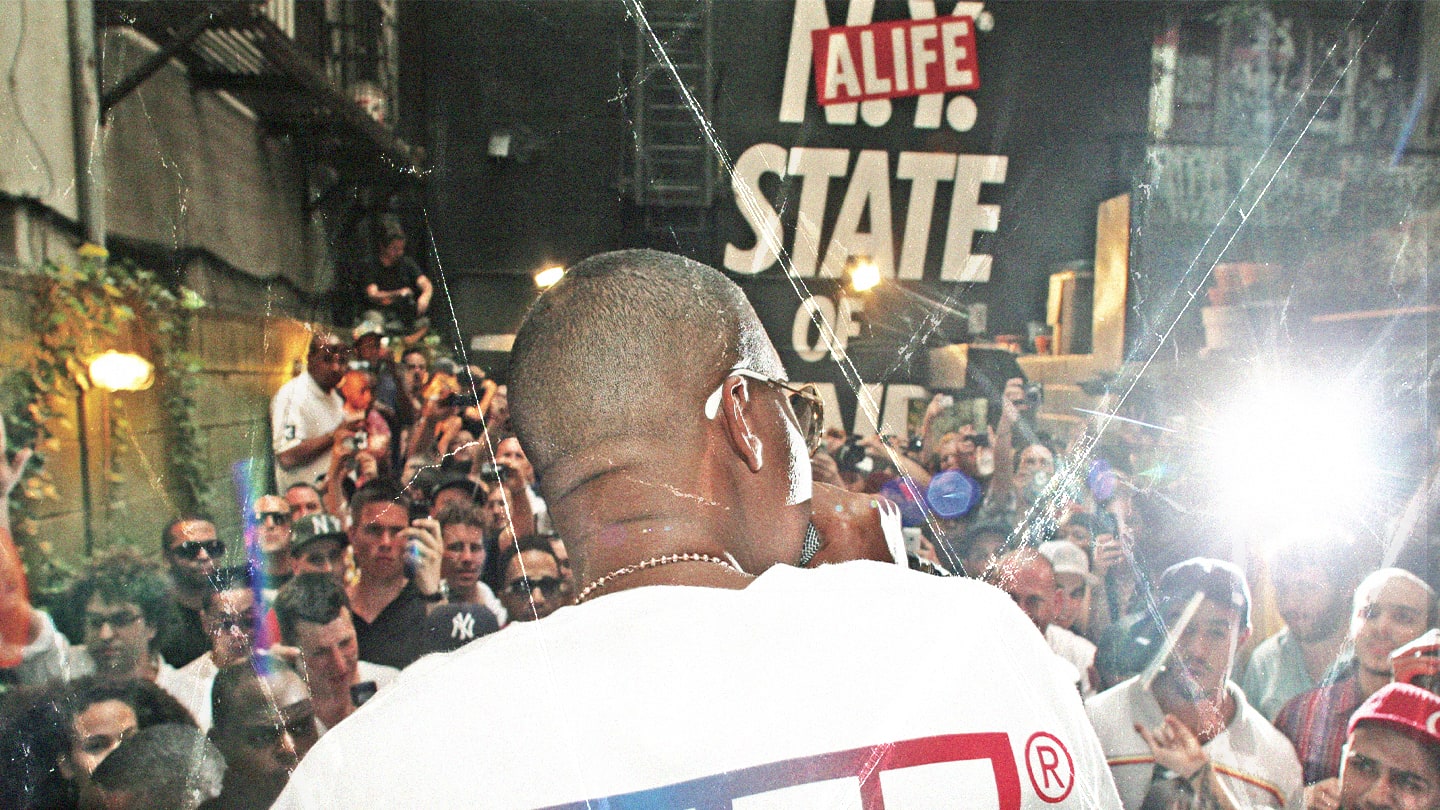
Like any great concert venue, Alife’s backyard has logged an impressive amount of stories over the years. Nas’ show was originally supposed to be an album listening party, but after a couple of drinks and some blunts, Esco jumped on top of a milk crate and began performing in the middle of a crowd. When Cypress Hills came to perform on 4/20 in 2010, the store gave free pre-rolled blunts to guests, and Cristofaro recalls a plume of smoke wafting out of Rivington’s backyard. A moment of absolute pandemonium occurred at Three 6 Mafia’s session in 2008, when a disgruntled neighbor threw a bucket of white paint off the roof onto the crowd below, sending concertgoers running amok in white paint and ruining each others’ fits for the night. Although everyone from King Krule to Chief Keef has performed at Alife, there isn’t a more storied Alife Session than that time Drake decided to suddenly celebrate the release of Nothing Was the Same at Rivington in 2013.
“We didn't tell anyone about the Drake show, literally no one, and everyone was there,” says Hill, who set up the show within 24 hours, even after he was stabbed by a determined Drizzy fan who was fiending for free Nothing Was the Same merch at Alife just days before. “People who had no idea about what Alife was were pulling up. Women in four-inch high heels and Rolls-Royces were rolling up to the store. Raekwon, Ghostface, and Mase came through. The back of the store was dope, but it was just filled with beer cans and trash. It wasn't the place where you would imagine Drake holding an album release party like that.”
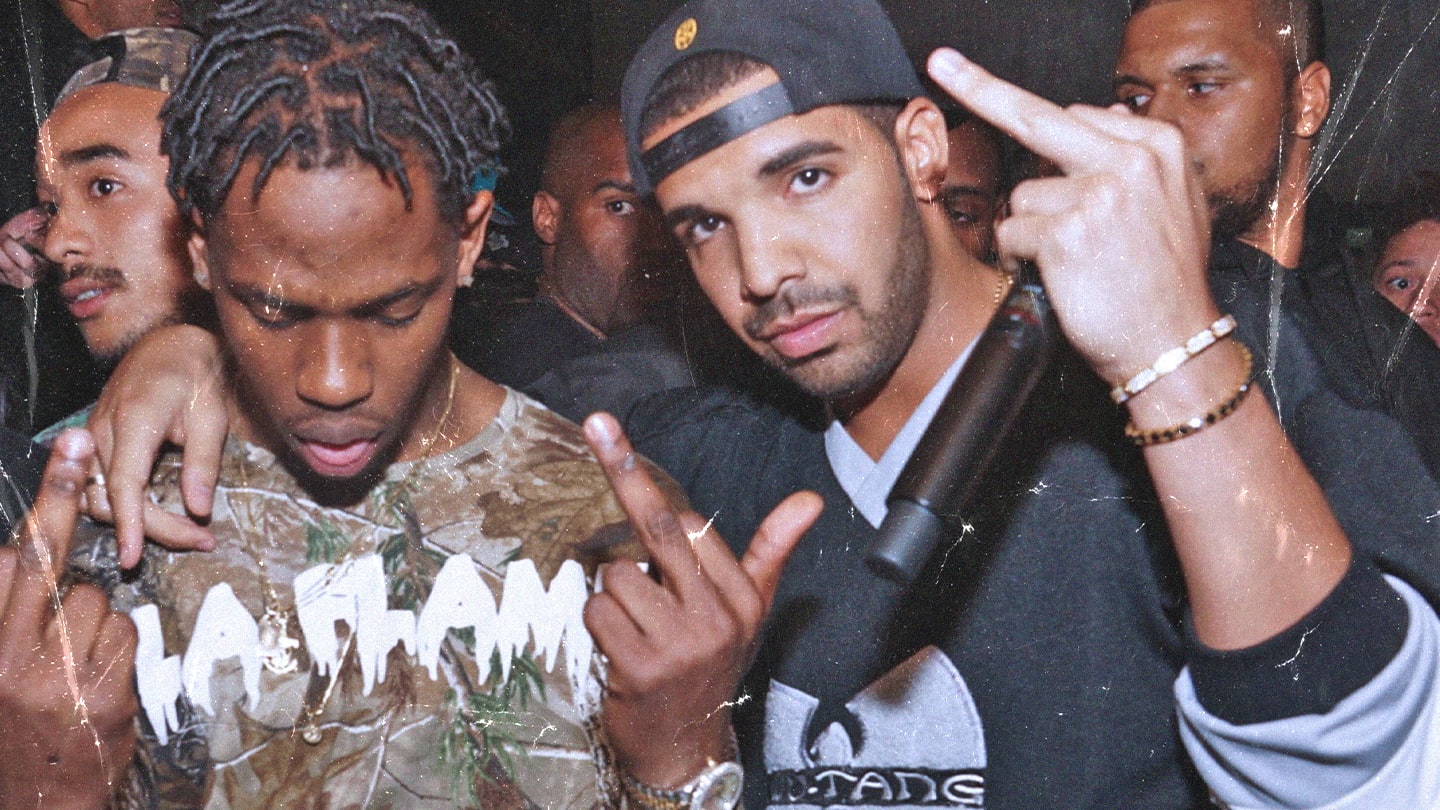
Fans were waiting for hours, and the cops were ready to shut the event down. And then Drake, in a vintage Wu-Tang hockey jersey, suddenly arrived around midnight. Once again, Alife had a Grammy Award-winning artist putting on a show in its backyard. Neighbors walked out onto their fire escapes to watch the mini concert. On the same night, a young Travis Scott scaled the walls of Alife’s backyard, like Spiderman in a Been Trill long-sleeve, to perform bangers off his first mixtape, Owl Pharaoh. Drake climbed up to fans who were sitting on top of a wooden awning over Alife’s patio and nearly broke it when he began performing songs like “Started From the Bottom.” And when Drake went into “Poundcake,” he respectfully cut the song early to pass the mic to Raekwon and perform “C.R.E.A.M” instead.
“Once the Drake shit popped off, I think the record labels really noticed the magnitude of those sessions and what it can bring to your artists,” says Campos, who remembers everyone from sports stars to record label A&Rs attending Alife Sessions. “At the end of the day, no one wack ever performed there. If you were back there, it meant the culture or the city fucks with you. People wanted that co-sign or that stamp.”
Artists like ASAP Rocky received that cosign when he performed at an Alife Session in 2011 days after he dropped his breakout music videos “Purple Swag” and “Peso.” It was a moment when Rocky said he felt like he made it and cried tears of joy on the car ride back home.
“Alife had this ability to propel an artist from being this unknown or underground phenomenon into a slightly higher notch where people might be comfortable to start giving you opportunities,” says ASAP Rocky’s former manager Chace Infinite. “Even now, it's so hard for artists to gain traction or create a buzz. But performing at Alife was this prestigious thing if you were able to get a show there.”
Even if booking a huge artist created a massively good look for the store, what Hill always found to be more impactful was people telling him an Alife Session put them on to a new artist they had never heard of before.
“People would hear about what happened, and they would go and check out someone's record and follow that artist,” says A-Trak of Fool’s Gold Records. “It's just tasteful curation, and there's a lot of thought and care that goes into it. When they go and bring in an OG like Three 6 Mafia, it helps the kids understand how important it’s to respect those OGs. When they bring in someone like John Mayer, Danny Brown, or ASAP Rocky, it’s like this invitational co-sign. I always loved and appreciated how Alife wasn’t on a high horse. They weren’t snobs, and they showed love to whoever was making noise at the moment. I think it helped their longevity and the scene itself.”
“Alife was part of my fashion school. I sort of hope to recreate that spirit it started in a lasting way."-Virgil abloh
Today, Alife continues to stand as one of the last brick-and-mortar stores from a bygone era in New York streetwear when stores like Nort, Reed Space, Clientele, and Alife redefined the retail industry and turned the Lower East Side into ground zero for modern sneaker culture.
“Alife was part of my fashion school. I sort of hope to recreate that spirit it started in a lasting way. I’ve been saying this for a while, but my ultimate goal is to have streetwear be perceived as an art form,” Virgil Abloh, who decided to open his Louis Vuitton men’s pop-up on Rivington Street last July, says over email. “It’s not a trend. We’re in the middle of this movement and it’s here to stay. Alife is kind of one of those heritage brands that started it all.”
A lot has changed on that Lower East Side block of Rivington where Alife still stands today. Four years ago, Streit’s, a 100-year-old matzo factory that was built inside 18th-century tenement homes, was sold to a real estate developer for $30 million. A year later, Alife’s next door neighbor ABC No Rio—a cultural arts center that was a home for punks, squatters, and others living on the fringes of the LES—had its own 100-year-old building demolished in exchange for a newly renovated space. By 2014, Alife had closed down all of its stores, with the exception of Rivington, and the brand began to shift its focus. It stopped the wholesale of its goods, cut a bad investor out of the company, and focused on raising capital to get back up to speed. Consequently, as Alife’s flame died down over the years, the Sessions did, as well.
“Back then, it was more chill, but today it's more complicated. There was probably only one level of management back then and we knew who to talk to immediately,” says Hill. “Today, you're competing with a lot of other concerts and going through more levels of management, so it's harder to pull things together.” The biggest name billed for an Alife Session in the past couple of years is likely G Herbo, who held a session for his debut album at Alife in 2017.
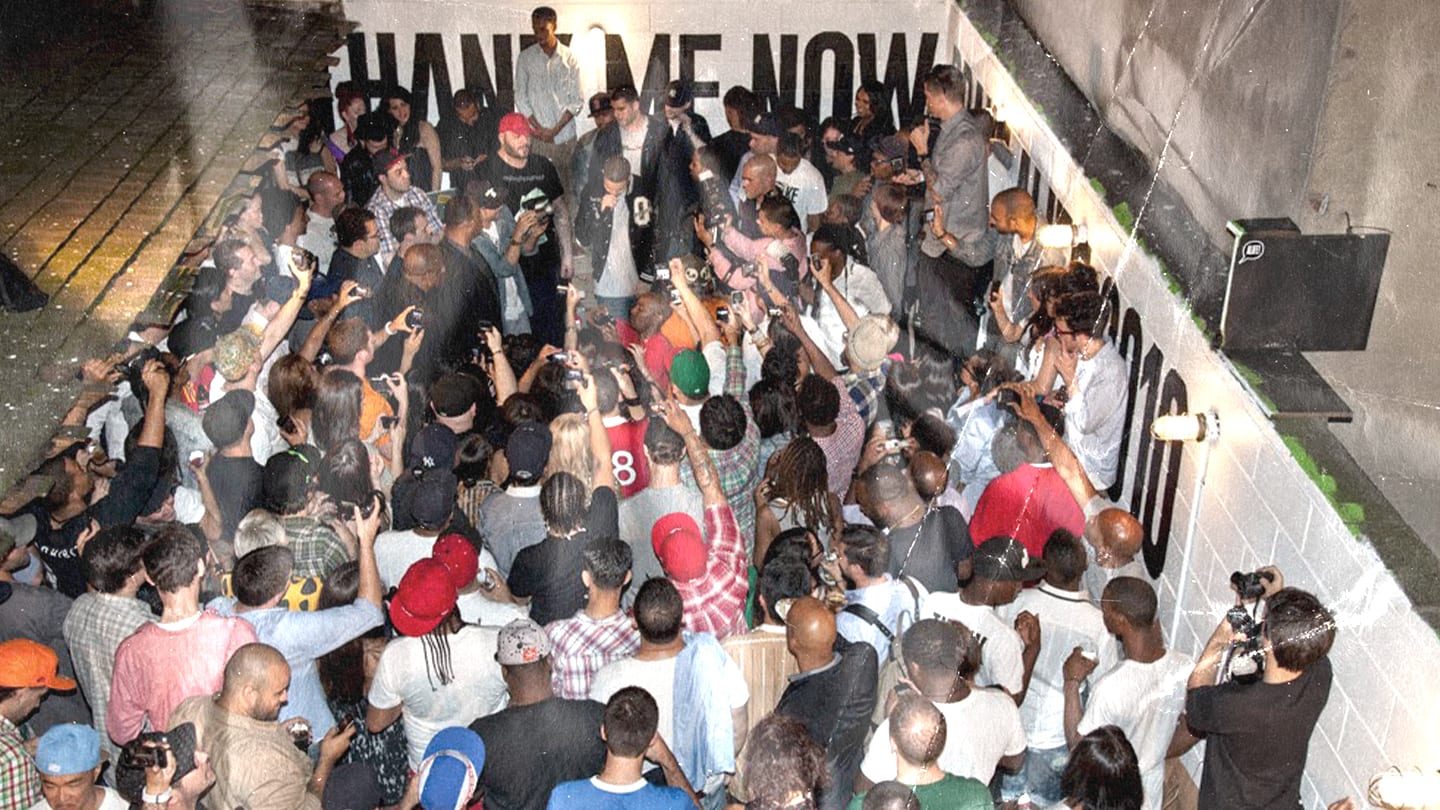
Although the most profitable years of Alife were during the aughts, Hill says the past two years have been some of the most fruitful for the brand. Alife hit a viral moment with a Crocs collaboration in 2018 and updated its look to speak to a younger generation of consumers. Newly released products, like a tie-dye T-shirt with a helvetica logo, was seen on Swae Lee, while Billie Eilish wore a tote bag inspired by Ziploc baggies on her Fader cover.
While an artist as big as Drake isn’t scheduled to play an Alife Session anytime soon, acts like Trash Talk and Lil Tecca have recently performed. But more than anything, Alife’s backyard continues to serve as a stage for fresh local talent. At a recent Alife Session, MIKE, a 20-year-old New York rapper from the Bronx who just wrapped up a tour with Earl Sweatshirt, was scheduled to play a set. MIKE isn’t selling out stadiums like John Mayer just yet, but he can easily fill up a small venue in New York City. He hasn’t released a hit song that’s racking millions of views on YouTube like ASAP Rocky’s “Peso,” but magazines like Pitchfork have already given his albums the much coveted “Best New Music” title. Yes, the Alife Sessions are different nowadays. But the packed out backyard showed it still meant something to be there. Skateboarders, graffiti writers, and music journalists mingled with one another. And no one paid any more attention to Sage Elleser of the Supreme skateboard team than to some random kid playing a Nintendo Switch in the middle of the crowd. Like in the store’s earliest days, Alife was keeping its ears to the streets. If New York had MIKE’s back, Alife did too.
Cristofaro, the only original Alife co-founder that's still involved with the brand, has gone through the ups and downs of running a streetwear brand for over 20 years. From making Alife the first brand to release co-branded 501 jeans with Levi's to having his store looted during a New York City blackout in the early 2000s, Cristofaro is undoubtedly a sesasoned streetwear veteran. But one thing he’s always been committed to is spotlighting new talent in New York. Whether that was putting an artist’s work on a T-shirt, or on the wall of Alife at Orchard St, the Alife Sessions was simply another way to show love.“There wasn’t really a goal with Alife Sessions,” says Cristofaro. “We just wanted to give back to the community that supported us and make noise for New York. At the time, and still, what we like to do is bring the heat for New York.”




